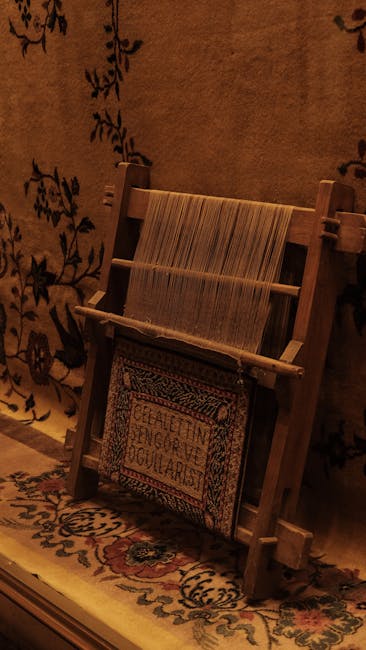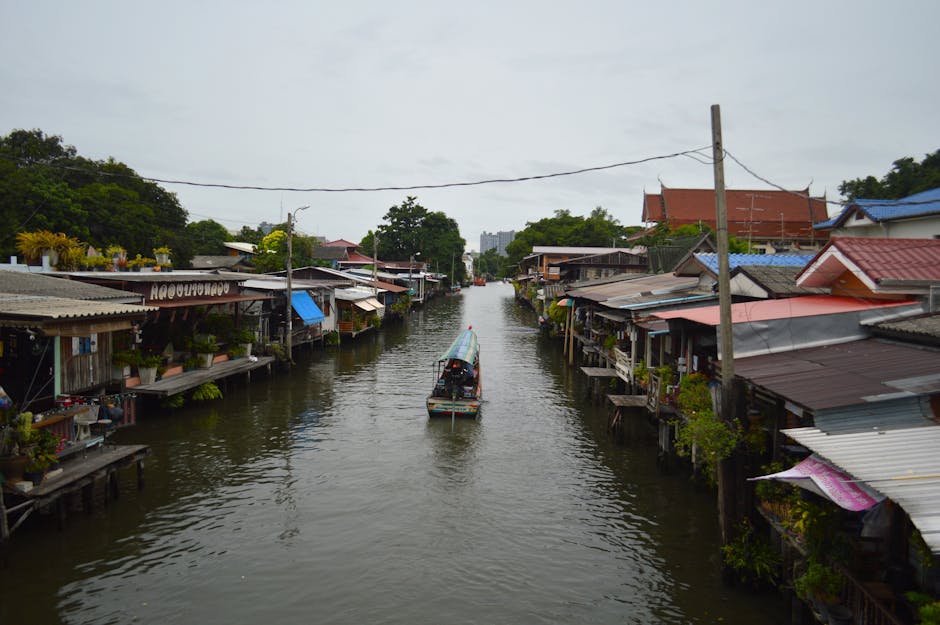Thai Silk: A Legacy of Craftsmanship, Woven with Tradition & Beauty

Thai Silk: A Legacy of Craftsmanship, Woven with Tradition & Beauty
Have you ever held a piece of Thai silk in your hands? I mean really held it, felt the way the light dances on its surface, traced the intricate patterns with your fingertips? If you haven't, you're missing out on something truly special. It's more than just fabric; it's a story, a legacy passed down through generations, a testament to the incredible skill and artistry of Thai artisans. Let me tell you, exploring the world of Thai silk has been one of the most rewarding cultural experiences of my life, and I'm so excited to share what I've learned with you!
The History Woven into Every Thread

Thai silk, or "mai thai" as it's known locally, isn't just a beautiful material; it's deeply intertwined with the history and culture of Thailand. Its origins can be traced back centuries, with evidence suggesting silk production existed in the region as early as the 3rd millennium BC. However, it wasn't until the 20th century that Thai silk truly gained international recognition, largely thanks to one remarkable individual: Jim Thompson.
Thompson, an American entrepreneur who settled in Thailand after World War II, saw the potential of Thai silk and dedicated himself to revitalizing the industry. He modernized production techniques, improved quality control, and, most importantly, marketed Thai silk to the world. He understood that Thai silk was unique - a luxurious, durable fabric with vibrant colors and intricate designs. He showcased its beauty to international buyers, fashion designers, and celebrities, making it a symbol of Thai elegance and craftsmanship. His efforts transformed the Thai silk industry from a struggling cottage industry into a thriving export market.
Unfortunately, Thompson mysteriously disappeared in Malaysia in 1967, a mystery that continues to fascinate and intrigue people to this day. But his legacy lives on, not only in the Jim Thompson House museum in Bangkok, a stunning example of traditional Thai architecture filled with art and antiques, but also in the continued success and global appreciation of Thai silk.
The Journey from Silkworm to Stunning Fabric

The process of creating Thai silk is a labor of love, a meticulous and time-consuming art that requires immense skill and patience. It's a journey that begins with the humble silkworm and ends with a breathtaking piece of fabric. Here's a glimpse into the fascinating steps involved:
- Raising Silkworms: This is where it all starts. Mulberry silkworms, which feed exclusively on mulberry leaves, are carefully raised and nurtured. The quality of the mulberry leaves directly impacts the quality of the silk, so farmers take great care in cultivating them. The silkworms are typically raised on bamboo trays in cool, dark rooms.
- Harvesting the Cocoons: After about a month, the silkworms begin to spin their cocoons. These cocoons are made of a single strand of silk filament, which can be incredibly long – sometimes up to a mile in length! The cocoons are harvested a few days after they are completed, before the silkworms can break out and damage the silk.
- Reeling the Silk: This is where the magic truly begins. The cocoons are boiled to soften the sericin, a natural gum that holds the silk filaments together. Then, the filaments from several cocoons are carefully unwound and reeled together onto a spindle to create a single strand of silk thread. This process requires a delicate touch and a keen eye.
- Dyeing the Silk: Once the silk thread is reeled, it's time for dyeing. Thai silk is known for its vibrant and long-lasting colors, achieved through the use of both natural and synthetic dyes. Natural dyes, derived from plants, insects, and minerals, are often used for traditional designs and create a rich, earthy palette.
- Weaving the Fabric: Finally, the dyed silk threads are ready to be woven into fabric. Traditional Thai silk is woven on handlooms, a process that requires incredible skill, dexterity, and years of experience. Weavers carefully interlace the warp (vertical) and weft (horizontal) threads to create intricate patterns and designs.
It's incredible to think about how much work goes into each piece of Thai silk. Each step, from raising the silkworms to weaving the fabric, is done with precision and care, resulting in a textile that is truly unique and valuable.
Distinguishing Authentic Thai Silk

With its growing popularity, unfortunately, there are many imitations of Thai silk available. It can be tricky to tell the difference between authentic Thai silk and cheaper, mass-produced fabrics. But don't worry, here are some tips to help you identify the real deal:
- The Luster: Authentic Thai silk has a unique, natural luster that comes from the way the light reflects off the uneven surface of the silk fibers. It's not a shiny, artificial sheen, but rather a soft, subtle glow. Imitation silks often have a much more uniform and artificial-looking shine.
- The Texture: Real Thai silk has a slightly uneven texture due to the hand-weaving process. You might notice small slubs or irregularities in the fabric. This is a sign of authenticity and adds to the fabric's character. Imitation silks are usually perfectly smooth and uniform.
- The Burn Test: This is a slightly more drastic test, but it's very effective. Take a small thread from the fabric and carefully burn it. Real silk will smell like burning hair and leave behind a brittle, crushable ash. Synthetic fabrics will melt and smell like plastic.
- The Water Test: Authentic Thai silk absorbs water easily. Place a small drop of water on the fabric. If it soaks in quickly, it's likely real silk. If the water beads up on the surface, it's probably a synthetic imitation.
- The Price: Authentic Thai silk is a premium fabric and is priced accordingly. If you see "Thai silk" being sold at a very low price, it's likely an imitation. Remember, you get what you pay for.
- The Certification Mark: Look for the official "Thai Silk" certification mark issued by the Thai government. This mark guarantees that the fabric is authentic Thai silk and has been produced in Thailand.
Remember, buying authentic Thai silk supports the livelihoods of Thai artisans and helps preserve this important cultural tradition. It's worth the investment!
The Diverse Designs and Patterns

Thai silk isn't just about the texture and quality; it's also about the incredible diversity of designs and patterns. Each region of Thailand has its own unique style, reflecting local traditions, beliefs, and natural surroundings. These designs are often passed down through families, with weavers learning the intricate patterns from their mothers and grandmothers.
Some of the most popular Thai silk designs include:
- Mudmee (Ikat): This technique involves dyeing the weft threads before weaving, creating intricate patterns that appear as the fabric is woven. Mudmee silk is known for its complex geometric designs and vibrant colors.
- Yok Dok: This is a supplementary weft technique where extra threads are added to create raised patterns on the surface of the fabric. Yok Dok silk often features floral motifs, animal figures, and geometric designs.
- Khmer Patterns: Influenced by the ancient Khmer civilization, these designs often feature intricate architectural motifs, mythological creatures, and scenes from epic poems.
- Lai Khit: This is a weft brocade technique used to create raised patterns with metallic threads, often gold or silver. Lai Khit silk is typically used for special occasions and ceremonial garments.
Beyond these traditional designs, Thai silk weavers are also constantly innovating and creating new patterns and styles. You can find Thai silk with everything from abstract designs to modern geometric patterns. The possibilities are endless!
Caring for Your Treasured Thai Silk

Because Thai silk is a delicate fabric, it requires special care to keep it looking its best. Here are some tips for caring for your treasured Thai silk garments and accessories:
Washing:
- Dry Cleaning is Best: The safest way to clean Thai silk is to have it professionally dry cleaned. This will prevent any damage to the delicate fibers and preserve the fabric's color and texture.
- Hand Washing (If Necessary): If you choose to hand wash your Thai silk, use cool water and a mild detergent specifically designed for delicate fabrics. Gently swish the fabric in the water, avoiding any harsh rubbing or scrubbing. Rinse thoroughly with cool water until all the detergent is removed.
- Avoid Hot Water and Harsh Chemicals: Never use hot water, bleach, or other harsh chemicals on Thai silk, as they can damage the fibers and cause the colors to fade.
Drying:
- Do Not Tumble Dry: Never put Thai silk in the dryer. The heat can damage the fibers and cause the fabric to shrink.
- Air Dry Flat: The best way to dry Thai silk is to lay it flat on a clean, dry towel in a shady spot. Avoid direct sunlight, as it can fade the colors.
Ironing:
- Iron on Low Heat: If you need to iron your Thai silk, use a low heat setting and iron the fabric inside out.
- Use a Pressing Cloth: Place a clean, dry cloth between the iron and the silk to protect the fabric from direct heat.
- Avoid Steam: Avoid using steam when ironing Thai silk, as it can cause water spots.
Storage:
- Store in a Cool, Dry Place: Store your Thai silk garments and accessories in a cool, dry place away from direct sunlight.
- Use Padded Hangers: Hang your silk garments on padded hangers to prevent wrinkles and maintain their shape.
- Protect from Moths: Use mothballs or cedar chips to protect your silk from moths.
With proper care, your Thai silk will last for years to come, becoming a cherished heirloom that you can pass down to future generations.
The Enduring Appeal of Thai Silk

So, what is it about Thai silk that makes it so special and enduringly appealing? I think it's a combination of factors:
- The Unmatched Quality: The meticulous craftsmanship and the use of high-quality silk fibers result in a fabric that is both luxurious and durable.
- The Vibrant Colors and Intricate Designs: The stunning array of colors and patterns, each with its own unique story and meaning, makes Thai silk a true work of art.
- The Cultural Significance: Thai silk is deeply rooted in Thai culture and tradition, representing the country's rich history and artistic heritage.
- The Versatility: Thai silk can be used for a wide range of applications, from clothing and accessories to home décor and art.
More than just a fabric, Thai silk is a piece of art, a cultural treasure, and a symbol of Thai craftsmanship and ingenuity. It's a reminder that some things are worth preserving, worth cherishing, and worth sharing with the world. I hope this journey into the world of Thai silk has inspired you to appreciate the beauty and artistry of this remarkable fabric. Maybe even consider adding a piece to your own wardrobe – you won't regret it!
Post a Comment